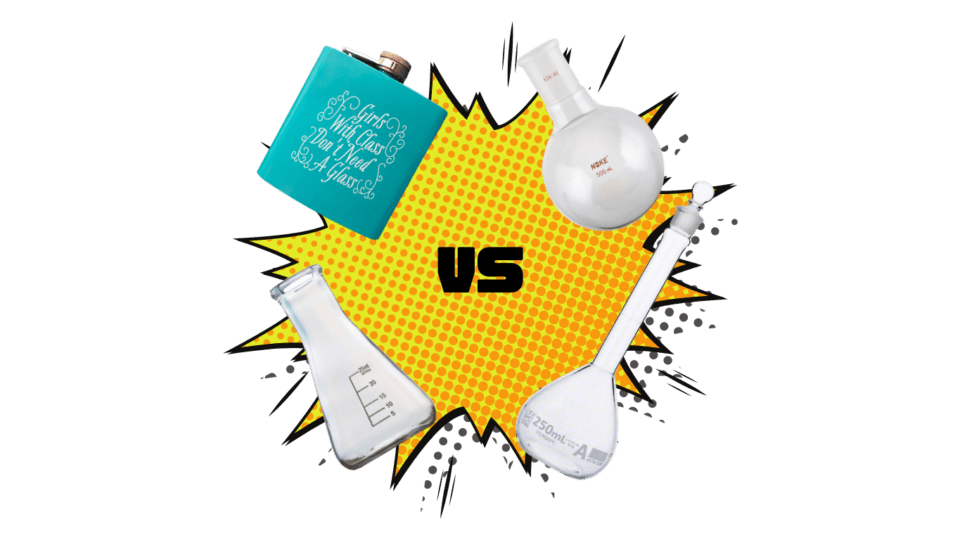Flask Faceoff

What is the first image that comes to mind when I say, “grab a flask”? Is it full of booze? Is it labware? Is it labware full of booze? 😏
There are multiple types of flasks in this world and we are here to breakdown which is which and what makes each one so cool.
Lab Flasks
Generally classified as having a large base with a narrow neck, they are made from glass or plastic and used for a variety of laboratory needs including mixing, collecting, holding, measuring, boiling, dissolving, or reacting solutions.
Fun Fact
Texas requires regular audits of laboratory glassware to minimize theft for drug protection. Break something? Don’t forget to tell the state!
Erlenmeyer Flask

The most iconic of labware and often erroneously referred to as a beaker by those with little science background. The Erlenmeyer flask was invented by German chemist Emil Erlenmeyer in 1860. He wanted a sealable container that would allow for swirling with spilling – something a parallel-sided beaker is prone to doing.
Erlenmeyers are great for: making, holding, and storing solutions.
Round-Bottom Flask

Sometimes referred to as boiling flasks, round-bottom flasks are most often made from borosilicate glass for its chemical inertness and thermal stability. Their iconic round feature allows for even heating or cooling of the contained solution and prevents stress fractures in the container itself.
Round-Bottoms are great for: distillation, collection, and heated reactions.
Volumetric Flask

A flask for measuring liquids with high precision. Each flask is calibrated to hold a precise volume at a specific temperature. Class A glassware is usually made from borosilicate glass and retains its accuracy longer than its Class B counterpart. Class B is usually made from soda-lime, a less durable substance than borosilicate glass, and has a wider accuracy tolerance range.
Volumetrics are great for: dilutions, precise volume measurements, and preparation of standards.
Hip Flask

A small, often curved container with a cap that holds about 8-oz and is used to smuggle alcohol. Modern day flasks are usually made of stainless steel or plastic but historically they have been made of glass pewter, silver, animal bladders or hollowed out fruit.
In the United States it is illegal to carry or drink from a hip flask due to open container laws, but jump the pond to the UK and it is perfectly legal to sip from a hip flask in public!
Fun Facts
Hipsters originally referred to people who carried hip flasks.
Bootleggers referred to men and women who concealed flasks within their boots.
